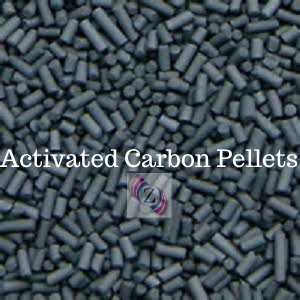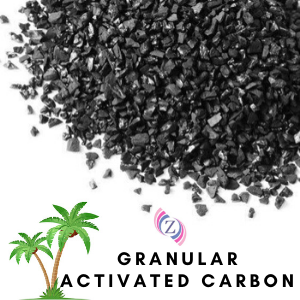About Activated Carbon:
Activated carbon are the most Powerful adsorbents Known .It is basically a solid material consisting mainly of pure carbon.A characteristic feature is its porous structure and the resulting immense surface area which may be as large as 1500 m²/gm.Due to its exceptional adsorption qualities,activated carbon is widely used in process destined to purify,discolor,recuperate and remove odors at low cost and superior efficiency. Activated Carbon work on the principle of adsorption.Adsorption is an interfacial process involving the collection of gaseous or solute components on the surface of adsorbent solids.This phenomenon is associated with physical attractive forces that bind gaseous and solute molecules commonly known as Van-Der-Walls forces.Adsorption is thus a physical process,i.e the substances adsorbed on the solid do not undergo any chemical reaction with the latter.The adsorbing solid is referred to as adsorbent and the substances to be adsorbed from liquid or the gas phase as the solute.
The adsorption power and rate is determined by the kind of activated carbon ,the particle size,the pore size and its distribution.
Pore Sizes and its distribution
when the carbon is activated it leads to opening of various pores in its structure.
The pores with diameters exceeding 500 A° are called macropores or the transport pores.These pores are larger larger pores and are not responsible for adsorption directly but they act as wide paths through which organic molecules penetrate .Thus they transport the adsorbate to the adsorption site,which are located inside the particle.A full network of transport pores needs to be distributed through out the carbon particle to take the adsorbate to the smallest adsorption pore site,
Pore with diameter below 50 A° are called micropores or the adsorption pores.These are the finest pores,which are located inside the carbon particle where the adsorption actually takes place.
The most common parameter to check the adsorption power of activated carbon is called methylene blue adsorption.The methylene blue indicator is a chemical having particle size 12 A° which prevents it form adsorbing on the adsorption pores,which are smaller than 12 A°,That is why an activated carbon with a uniform and better pore size distribution will not give high methylene blue value but will work better as it will adsorb impurities which are very small in size.
Applications of Activated Carbon:
- Effluent Treatment Plant to reduce BOD/COD/Color from industrial waste water
- Purification of drinking water,Air and Gas mask
- To absorb moisture from compressed air for paint shop
- To De-chlorinate soft drink plant process water & swimming pools
- To remove oil from hot condensate
- To remove oil vapor from Gas Stream
- Solvent recovery & gold recovery
- Removal of dissolved organic impurities
- To remove odor
- Breweries & Distilleries
- Catalyst carrier in petroleum refineries
- Purification of carbon dioxide & industrial gas
- Decolorisation of plasticizer, glycerin,fine chemicals,dies intermediates,pharmaceutical bulk drug,food colors, sugar solution, glucose,dextrose,lactose & other starch sugar solution.(vegetable oil & fats, herbal products)
- Used in pharmaceutical formulation,IV fluid & laboratory chemicals,Pesticides & insecticide industries
Showing all 2 results
-
Activated Carbon PelletsGranular Activated Carbon
Price Per Kg: 60.0 Rs/Kg
Pkg: 25 Kg Bag



